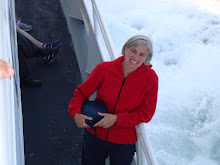By Bob Crelin
Publisher: Charlesbridge
ISBN: 978-1-57091-785-1
FROM THE FLAP: Do you wonder, when you see the Moon, at dusk, or dawn, or midday noon, just why her face is curved or round, or why she sometimes can’t be found?
From night to night the Moon seems to change. She grows or shrinks, or sometimes even disappears. What causes this transformation? The answer is as simple as the play of light and shadow, and as grand as the dance of the Earth and Moon in space. Open this book, turn the pages, and watch the Moon change.
KATE’S TAKE: If your science standards require you to teach the lunar phases, don’t miss this book!
ASTRONAUT BIOGRAPHIES: (Verbal/Linguistic)
Write a report on one of the astronauts who reached the moon.
LUNAR PHASES: (Visual/Spatial and Kinesthetic)
Set a lamp up on a stage and remove the lampshade. Divide the class in half and give each of the students in one half of the class an orange. Have them hold the orange out in front of them and rotate their bodies until the orange’s surface is completely shadowed (new moon). Then ask them to slowly rotate. This will allow them to see all of the lunar phases on their orange.
MOON MATH: (Logical/Mathematical)
Find out how far away the moon is from the earth. Calculate how long it would take to get there using common modes of transportation such as cars and airplanes. Calculate the average speed of space shuttles based on how long it takes them to fly from the Earth to the Moon.
MOON PAINTINGS: (Visual/Spatial and Verbal/Linguistic)
Assign students a lunar phase. Give them contact paper and ask them to trace and cut out that shape. Place the cut-out on a 8.5 by 11(landscape format) piece of white paper. Draw a landscape with oil crayons. Paint over the landscape and the horizon with water paints. After the paint dries, remove the contact paper. Ask students to label the painting with the appropriate lunar phase stanza from the book. Special thanks to Jane Lattimore for this activity.
MOON ROUND ROBIN: (Interpersonal)
Ask students to sit in a circle. Have one student name the first phase of the moon (new moon.). The next student names the next phase of the moon (first quarter). Repeat until you’ve gotten all the way around the circle without any mistakes. Special thanks to Holly Berry for this activity.
BOOK BUDDIES:
-Almost Astronauts: 13 Women Who Dared to Dream by Tanya Lee Stone
-Apollo: Through the Eyes of the Astronauts by Robert Jacobs
-Mission Control, This is Apollo: The Story of the First Voyages to the Moon by Andrew Chaikin
-Moonshot: The Flight of Apollo 11 by Brian Floca
-The Man Who Went to the Far Side of the Moon: The Story of Apollo 11 Astronaut Michael Collins by Bea Uusma Schyffert
Subscribe to:
Post Comments (Atom)

We have Faces of the Moon out from the library now and we've been enjoying it. Thanks for the great activity suggestions.
ReplyDeleteI really like the activity with the orange. It is very original and the hands-on nature of it will SHOW kids how the sun, moon, and earth interact in a clear, simple way.
ReplyDeleteHi Inneedofchocolate,
ReplyDeleteI'm glad you're enjoying the activities and the book.
Kate
Thanks Melissa! I think that activity helped me conceptualize the lunar phases as much as it helped the kids.
ReplyDeleteKate